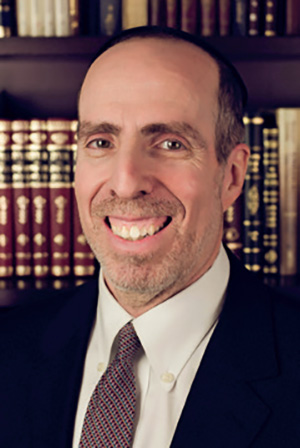
Part I
Background in the Gemara and Rishonim
The Gemara (Shabbat 21b) states that the mitzvah of lighting Chanukah candles can be fulfilled on three levels: the basic mitzvah is to light one candle per household, the mehadrin (those who seek to fulfill the mitzvah on a higher level) light one candle per family member, and the mehadrin min hamehadrin (those who seek to fulfill the mitzvah on an even higher level) light one candle on the first night, two on the second, etc. Our practice is for everyone to follow the mehadrin min hamehadrin level under ordinary conditions.
There is a well-known debate among the Rishonim how to fulfill the highest level of Chanukah lighting. According to Tosafot (Shabbat 21b s.v. V’Hamehadrin), the mehadrin min hamehadrin add one candle per night, but must light only one menorah per household. Tosafot explain that lighting more than one menorah per household would make it difficult for onlookers to determine how many candles are being lit for that day.
However, according to the Rambam (Hilchot Chanukah 4:1), one would light one menorah per household member and add a candle to each menorah every night (i.e., if there are 10 members in the household, 10 candles would be lit in total on the first night, 20 the following night, etc.) as this higher level is obviously adding on to the level before it, in which a candle is lit for each member of the household.
Shulchan Aruch vs. Rama
The Bet Yosef (Orach Chaim 671) cites this debate and writes that the custom is to follow Tosafot and light only one menorah per household, adding a candle every night. This is how Maran rules in Shulchan Aruch (Orach Chaim 671:2), while the Rama (in a variation on the Rambam) rules that each member of the household should light their own menorah.
The Taz (Orach Chaim 671:1) famously notes that this is a rare instance in which the Sefaradim follow Tosafot, while the Ashkenazim follow the Rama’s variation of the Rambam. Indeed, the practice of lighting only one Chanukah lamp has resonated deeply with Sephardic Jews and has become an iconic hallmark in Sephardic families. Interestingly, Yemenite Jews (as noted by Rav Zecharia Ben Shlomo, Orot HaHalacha page 886) also follow the ruling of Maran Rav Yosef Karo despite the strong inclination of Yemenite Jews to follow the rulings of the Rambam. Teachers should be sensitive to Sephardic and Yemenite students and be alert to this difference in practice.
Interestingly, according to both the Shaarei Teshuva (671) and the Kaf HaChaim (Orach Chaim 671:7), an Ashkenazic visitor to a Sephardic home may light his own candles without violating lo titgodedu (the prohibition to maintain variant practices in the same space). These authorities follow the approach that “lo titgodedu” is not violated when the varying approaches stem from long-standing differences between communities, such as the different approaches to Chanukah candle-lighting.
Next week, God willing, we will address the issue of Sephardic and Yemenite students lighting Chanukah candles in the dormitory of a yeshiva, seminary or university.
Rabbi Haim Jachter is the spiritual leader of Congregation Shaarei Orah, the Sephardic Congregation of Teaneck. He also serves as a rebbe at Torah Academy of Bergen County and a dayan on the Beth Din of Elizabeth.













